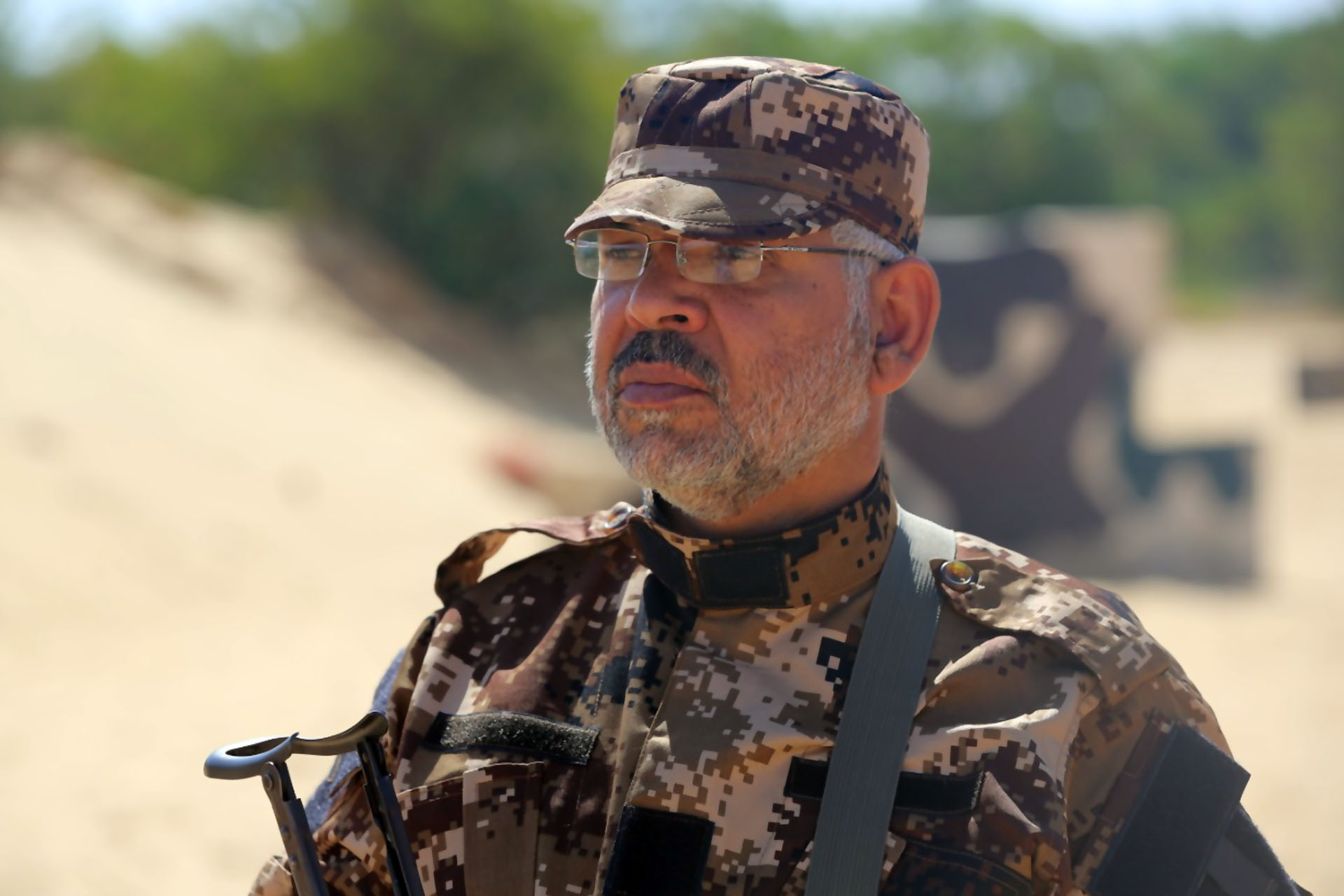Martyr Jumaa Al-Tahla (Al-Jazeera)
Jumaa Al-Tahla is a Jordanian engineer of Palestinian origin, one of the fighters of the Izz al-Din al-Qassam Brigades, the military wing of the Islamic Resistance Movement (Hamas), and the founder of the Qassam Cyber Weapon Unit. He was born in 1962 in Jordan. He began his jihadi life when he participated with the resistance fighters in confronting the Israeli invasion of Lebanon in 1982. He then moved between several stations, and became the cybersecurity official for the Al-Qassam Brigades in the Gaza Strip. He was assassinated by Israel in the Battle of Saif Al-Quds in 2021.
Foundation
Juma Al-Tahla was born on November 9, 1962 in the Ras Al-Ain area in the Jordanian capital, Amman, to a Palestinian family whose origins go back to the city of Ramla, from which they were displaced in 1948 to the Gaza Strip, before the family moved to Hebron and then Jordan.
He was a member of the Muslim Brotherhood, and was raised by Youssef Al-Azm, Abdullah Azzam, and Muhammad Abu Fares.
He married and had four sons and one daughter. His family accompanied him in all his stops, including Afghanistan, Syria, and the Gaza Strip.
Scientific formation
Juma Al-Tahla began his educational career in the schools of the United Nations Relief and Works Agency for Palestine Refugees (UNRWA) in the Hay Nazzal area, and finished his secondary studies from Hanin Secondary School in 1981, then he obtained a scholarship to the Wadi Al-Seer Engineering College affiliated with UNRWA to study engineering drawing.
After a year of study had passed, he was expelled from the college due to a dispute with one of the professors, as a result of him and a colleague being late to the lecture because they were performing prayer.
In 1982, he enrolled to study accounting at Beirut Arab University, but left and joined the Faculty of Sharia at the University of Jordan.
The martyr Jumaa Al-Tahla settled in the Gaza Strip in 2011 (Al-Jazeera)
Jihadist stations
Jumaa al-Tahla's first battle was in confronting the Israeli invasion of southern Lebanon in 1982, where he gained combat experience in confronting the occupation and using various weapons.
The second stop was in 1983, when he traveled to participate with what were called the “Arab Mujahideen” in the Afghanistan War, led by Abdullah Azzam, and there he served as “Head of the Arab Mujahideen Services Office” in Pakistan, where he remained until 1992.
He then returned to Jordan and specialized in the construction field for several years, then moved to work in the United Arab Emirates and founded a contracting company there.
In 2004, Al-Tahla left his company and business and joined the field of military manufacturing with the resistance. He traveled to Syria to participate in developing the Izz al-Din al-Qassam Brigades’ weapons and combat methods.
He continued to work in Damascus with the Al-Qassam Brigades for several years, and in 2009 the leadership of the Hamas movement asked him to travel to the Gaza Strip. On his way there, Egyptian security arrested him and put him in Abu Zaabal prison, before he was released from it after the fall of the Mubarak regime in 2011 following the “25 Revolution.” January".
Al-Tahla was able to complete his way to the Gaza Strip to settle there and begin a new stage of resistance.
Cybersecurity of resistance
Al-Tahla settled in the Gaza Strip in 2011, bringing with him years of expertise and experience, which he employed in developing cybersecurity and military manufacturing in the Al-Qassam Brigades.
Al-Tahla worked on developing programs related to electronic warfare, cybersecurity, and scientific development in the Al-Qassam Brigades, and became its cybersecurity officer.
In 2014, he supervised the establishment, formation, and structure of the Electronic Warfare Unit (Cyber Weapon), and he personally led numerous attacks targeting the enemy’s vital systems. The Qassam “Cyber Weapon” succeeded in controlling the Israeli army’s siren system.
In May 2019, this unit, led by Al-Tahla, carried out a major attack on Israeli targets, affecting 30,000 targets, most of which were security installations and military bases.
Al-Tahla created an army called the “Al-Quds Electronic Army,” whose idea is based on mobilizing the largest possible number of young and active energies with experience in the cyber field, and directing them to launch cyber attacks against Israel’s interests and systems.
The wife of the martyr Al-Tahla, Umm Mujahid, at a honoring ceremony organized by the Islamic Movement in Jordan for the families of the martyrs (Al-Jazeera)
Drone industry
Engineer Jumaa Al-Tahla also had a role in the project to manufacture drones in the Al-Qassam Brigades, as he trained and worked alongside Muhammad Al-Zawari, and participated alongside him in developing the first versions of drones.
Al-Tahla was one of the supervisors of the Qassam drone project, along with a group of engineers, including Hazem Al-Khatib and Dhafer Al-Shawa. He worked on manufacturing and developing missiles, increasing their destructive power, and manufacturing reconnaissance and surveillance aircraft.
The assassination of Al-Tahla
The Israeli army tried to assassinate Jumaa al-Tahla several times and did not succeed, then it managed to do so on May 12, 2021, as it targeted him with an air strike, along with a group of commanders and engineers, during the Battle of Saif al-Quds.
Source: Al Jazeera + websites

